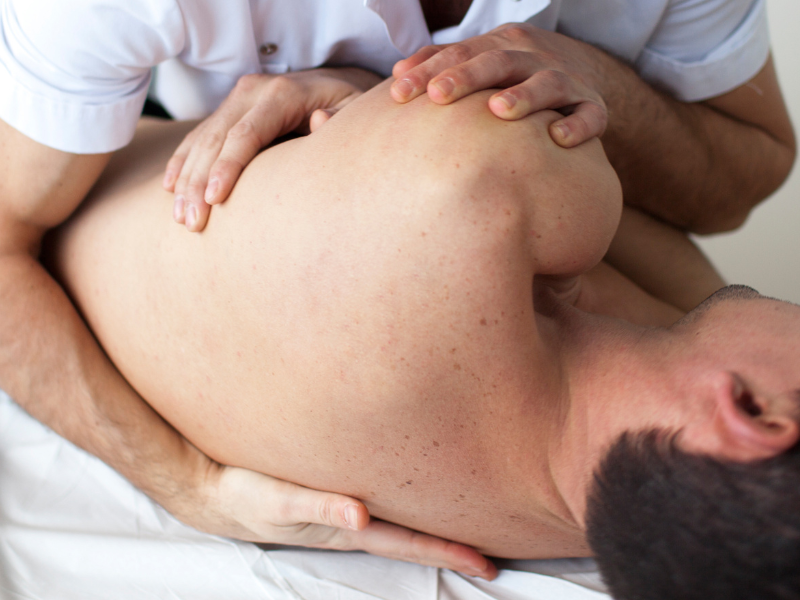How to get a resting night's sleep?
This may seem like a pretty easy one, but any sort of commotion can startle you awake and disrupt your sleep patterns.
Partying neighbours, snoring, and loud traffic can all be causes of noise pollution in the bedroom that can prevent you from getting much-needed, restful and uninterrupted sleep.
What are the benefits of noiseless night?
- Reduced noise levels can lower the body's stress response, allowing the body to relax and prepare for sleep more easily.
- A quiet environment can help to create a sense of calm and reduce feelings of anxiety, which can make it easier to fall asleep.
- Disturbances can disrupt the natural sleep cycle, causing frequent awakenings and making it harder to fall back asleep.
- Noise can also interfere with the production of melatonin, a hormone that helps regulate sleep. With less melatonin, it can be harder to fall asleep and stay asleep.
- Noise can also lead to increased blood pressure, heart rate, and muscle tension, which can make it harder to relax and fall asleep.
- Without the interruption of any turmoil, the body can enter deeper stages of sleep, which are important for physical and mental restoration.
- A quiet environment can also improve the overall quality of sleep, making you feel more refreshed and alert when you wake up.
There are a couple of easy ways to reduce the amount of noise.
The first option is to buy some quality noise-cancelling headphones. A simple Google search will show up hundreds of options. My personal favourites are the noise-cancelling headphones, extremely comfortable,
great sound and are not bulky. You can also play soft soothing music as you drift off to sleep.
There are several ways to reduce noise in order to improve sleep:
- Use earplugs or noise-cancelling headphones.
- Invest in thicker curtains or blinds to block out external noise.
- Use a white noise machine or app to create a consistent background sound that can mask other noises.
- If the racket is coming from within your home, try using a fan or humidifier to create a soothing sound.
- Use an air purifier to help filter out dissonance as well as improve indoor air quality.
- Consider moving to a quieter living space if the noise problem persists.
The more cost-effective solution: close doors and windows, and wear earplugs, cheap yet very effective!
Remember to create a sleeping routine to get profoundly asleep, from eating lighter, reducing caffeine a few hours before, and having the most comfortable contoured pillow to help you relax and sleep!
Do you want to learn more? Read our Frequently Asked Questions for...
Yes, massage can significantly contribute to better sleep quality. Massage therapy promotes relaxation by reducing stress, anxiety, and muscle tension, which are common obstacles to a peaceful night's sleep. Techniques like acupressure, Swedish massage, and deep tissue massage encourage relaxation and improve blood circulation, preparing the body for rest. By easing physical discomfort and promoting a sense of calm, massage can help create an optimal sleep environment, allowing you to enjoy more restful and rejuvenating sleep.
 0
0 0
0It is recommended to stop drinking alcohol for at least a few hours before going to bed. Alcohol can disrupt your sleep patterns and affect the quality of your rest. It can make you feel drowsy initially, but as it metabolizes in your body, it can lead to fragmented and restless sleep. Additionally, alcohol can increase the likelihood of snoring and sleep apnea, which further disrupts your sleep. Therefore, it is best to avoid consuming alcohol close to bedtime to ensure a more restful and rejuvenating sleep.
On the other hand, it is also advisable to limit your caffeine intake before sleep. Caffeine is a stimulant that can interfere with your ability to fall asleep and stay asleep. It can take several hours for the effects of caffeine to wear off, so it is recommended to avoid consuming caffeinated beverages like coffee, tea, or energy drinks at least four to six hours before bedtime. By doing so, you can give your body enough time to process and eliminate the caffeine, allowing you to have a better chance of falling asleep and experiencing a more restorative sleep throughout the night.
 0
0 0
0It is generally recommended to stop consuming caffeine at least 6 hours before bedtime. Caffeine is a stimulant that can interfere with your sleep quality and make it harder for you to fall asleep. By allowing a sufficient gap between your last caffeine intake and bedtime, you give your body enough time to metabolize and eliminate the caffeine from your system, reducing its impact on your sleep.
However, it's important to note that the exact time frame may vary from person to person. Some individuals are more sensitive to caffeine and may need to stop consuming it even earlier in the day to avoid sleep disturbances. Additionally, factors such as age, metabolism, and overall health can influence how long caffeine stays in your system. If you find that caffeine affects your sleep, it's best to experiment with different cut-off times to determine what works best for you. Remember, a good night's sleep is essential for your overall well-being, so it's worth considering limiting your caffeine intake before sleep.
 0
0 0
0The time it takes for food to digest before sleep can vary depending on the type and quantity of food consumed. Generally, it is recommended to allow at least two to three hours for digestion before going to bed. This allows your body enough time to break down and absorb the nutrients from the food, preventing discomfort and promoting better sleep quality.
Eating a heavy meal or consuming foods that are high in fat, protein, or spice can take longer to digest. These types of foods require more effort from your digestive system, which can lead to indigestion or acid reflux if you lie down too soon after eating. On the other hand, lighter meals that are rich in fiber, such as fruits, vegetables, and whole grains, tend to digest more quickly.
To ensure a good night's sleep, it's advisable to have your last meal or snack at least two to three hours before bedtime. This allows your body enough time to process the food and reduces the risk of discomfort or disrupted sleep. Additionally, choosing lighter, easily digestible foods can help promote a more restful night's sleep. Remember to listen to your body and adjust your eating habits accordingly to find what works best for you.
 0
0 0
0It is recommended to change your bed sheets at least once every two weeks. Bed sheets accumulate dirt, sweat, and dead skin cells over time, which can create an unhygienic sleeping environment. Regularly changing your bed sheets helps maintain cleanliness and freshness, promoting better sleep and overall well-being. However, if you have allergies, sensitive skin, or certain health conditions, it may be beneficial to change your bed sheets more frequently, such as once a week, to minimize potential irritants and allergens.
In addition to regular washing, it is important to handle bed sheets with care. Follow the manufacturer's instructions for washing and drying to maintain their quality and longevity. Consider having a spare set of bed sheets on hand, so you can easily swap them out while the others are being laundered. By keeping your bed sheets clean and fresh, you can create a comfortable and inviting sleeping environment for a restful night's sleep.
 0
0 0
0Previous
Next
Sleep apnea is a common sleep disorder that affects many people worldwide. While it cannot be completely cured, it can be effectively managed and controlled with appropriate treatment. Sleep apnea is characterized by pauses in breathing or shallow breaths during sleep, leading to disrupted sleep patterns and daytime fatigue.
The most common treatment for sleep apnea is continuous positive airway pressure (CPAP) therapy. This involves wearing a mask over the nose or mouth during sleep, which delivers a constant flow of air to keep the airways open. Other treatment options include lifestyle changes, such as weight loss and avoiding alcohol and sedatives before bedtime. In some cases, surgery may be recommended to remove excess tissue or correct structural abnormalities in the airways.
It's important to remember that sleep apnea is a chronic condition that requires ongoing management. With the right treatment and lifestyle adjustments, individuals with sleep apnea can experience significant improvement in their symptoms and overall quality of sleep. If you suspect you may have sleep apnea, it is advisable to consult a healthcare professional for a proper diagnosis and personalized treatment plan.
 0
0 0
0Sleep apnea is a sleep disorder that causes interruptions in breathing during sleep. It can lead to daytime fatigue, loud snoring, and other health issues. Treating sleep apnea typically involves a combination of lifestyle changes, medical interventions, and the use of devices.
One effective way to manage sleep apnea is by making certain lifestyle adjustments. Maintaining a healthy weight, exercising regularly, and avoiding alcohol and sedatives can help reduce symptoms. Additionally, sleeping on your side instead of your back and keeping your nasal passages clear can improve breathing during sleep.
Medical interventions may also be necessary to treat sleep apnea. Continuous positive airway pressure (CPAP) therapy is a common treatment method. It involves wearing a mask over your nose or mouth while you sleep, which delivers a steady stream of air to keep your airways open. Other options include oral appliances that help keep the airway open or surgery to remove excess tissue blocking the airway.
Managing sleep apnea involves a combination of lifestyle changes, medical interventions, and the use of devices. By adopting healthy habits, seeking medical advice, and exploring treatment options, individuals with sleep apnea can improve their sleep quality and overall well-being.
 0
0 0
0Sleep apnea is a common sleep disorder that affects breathing during sleep. It occurs when a person's airway becomes partially or completely blocked, leading to pauses in breathing or shallow breaths. These interruptions can happen multiple times throughout the night, disrupting the normal sleep cycle and causing various symptoms.
People with sleep apnea often experience excessive daytime sleepiness, loud snoring, and frequent awakenings during the night. They may also wake up with a dry mouth or headache. Sleep apnea can have serious health consequences if left untreated, including an increased risk of high blood pressure, heart disease, and stroke.
If you suspect you or someone you know may have sleep apnea, it is important to consult a healthcare professional for a proper diagnosis and treatment options. Treatment may involve lifestyle changes, such as weight loss or sleeping in a different position, as well as the use of a continuous positive airway pressure (CPAP) machine or other devices to help keep the airway open during sleep. Managing sleep apnea can greatly improve sleep quality and overall well-being.
 0
0 0
0








